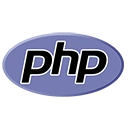Profiling and optimization are crucial steps in ensuring that your PHP applications run efficiently and deliver a smooth user experience. In this guide, we'll explore PHP profiling and optimization techniques to help you identify and resolve performance bottlenecks:
What is Profiling?
Profiling is the process of analyzing the execution of a PHP application to identify performance bottlenecks and areas that can be optimized. Profilers collect data on function calls, execution times, memory usage, and more.
Profiling Tools
Several profiling tools are available for PHP, including Xdebug, Blackfire, and New Relic. These tools help you measure and analyze your application's performance. Xdebug, for example, provides detailed reports on function calls, execution times, and memory usage.
Steps for Profiling
Profiling involves the following steps:
- Installation: Install a profiling tool like Xdebug and configure it in your PHP environment.
- Profiling Run: Trigger a profiling run on your application. You can profile specific scripts or the entire application.
- Data Collection: Collect profiling data, which includes function call traces, execution times, and memory usage.
- Analysis: Analyze the collected data to identify performance bottlenecks and areas that need optimization.
- Optimization: Make improvements to your code based on the profiling results.
- Testing: Re-profile and test your application to verify that the optimizations have improved performance.
Optimization Techniques
After profiling, you can use various optimization techniques to enhance your PHP application's performance:
1. Caching
Implement caching mechanisms to store and reuse frequently accessed data. Use technologies like Memcached or Redis for in-memory caching.
2. Database Optimization
Optimize your database queries by using indexes, reducing the number of queries, and employing efficient SQL statements. Tools like Eloquent's query builder can help in this regard.
3. Code Refactoring
Refactor your code to remove redundant or inefficient parts. Break down complex functions into smaller, more focused ones for better maintainability and performance.
4. Opcode Caching
Use an opcode cache like APC or OPcache to store precompiled PHP scripts in memory. This significantly reduces the need to recompile scripts on each request.
5. Image Optimization
Optimize images to reduce their size, which leads to faster loading times for web pages. Tools like ImageMagick and libraries like GD can help with image optimization.
6. Minification and Compression
Minify and compress your CSS and JavaScript files to reduce their size and improve page load times. Tools like UglifyJS and CSS Minifiers can be used for this purpose.
7. Load Balancing
Implement load balancing to distribute the application's workload across multiple servers, improving response times and availability.
8. Content Delivery Networks (CDNs)
Utilize CDNs to deliver static assets like images, stylesheets, and scripts from servers located closer to the user, reducing latency and speeding up content delivery.
Continuous Monitoring
After optimization, it's essential to continuously monitor your application's performance. Profiling tools and monitoring solutions like New Relic can provide real-time insights into your application's health and performance.
Conclusion
Profiling and optimization are ongoing processes that help ensure your PHP applications run efficiently and provide a great user experience. By using profiling tools and applying optimization techniques, you can identify and resolve performance bottlenecks, making your applications faster and more responsive.

